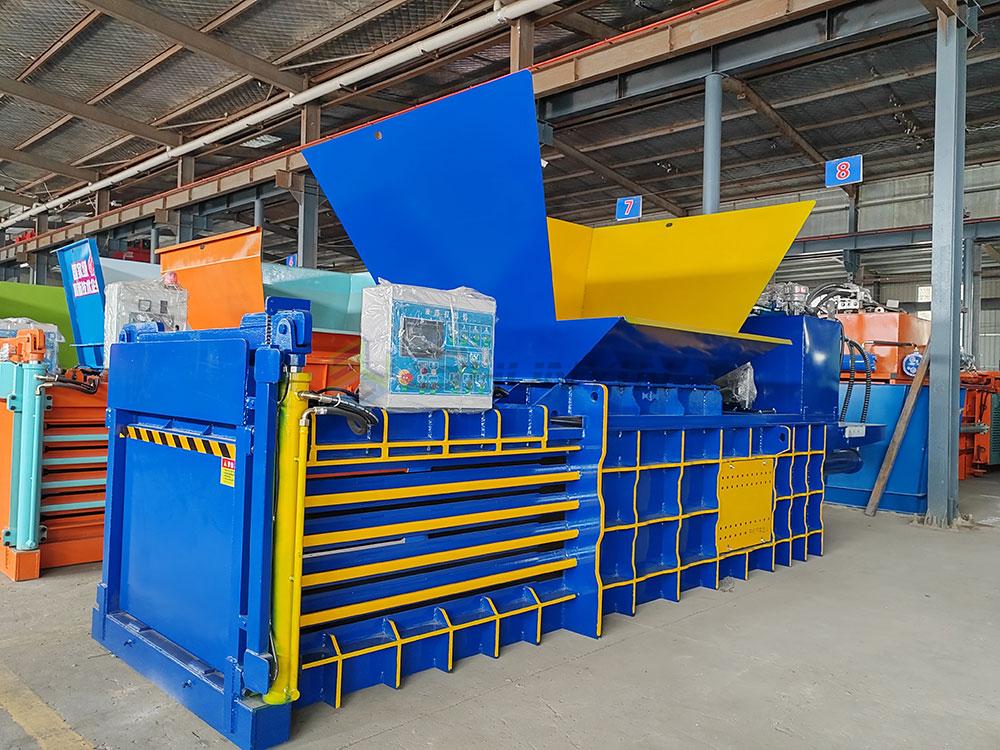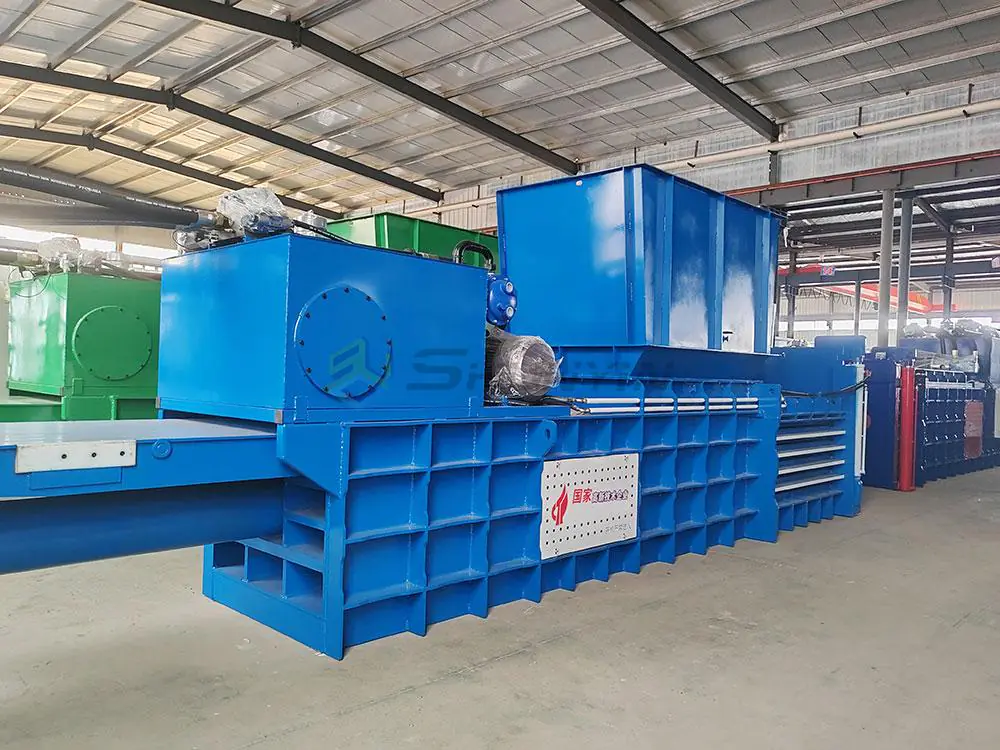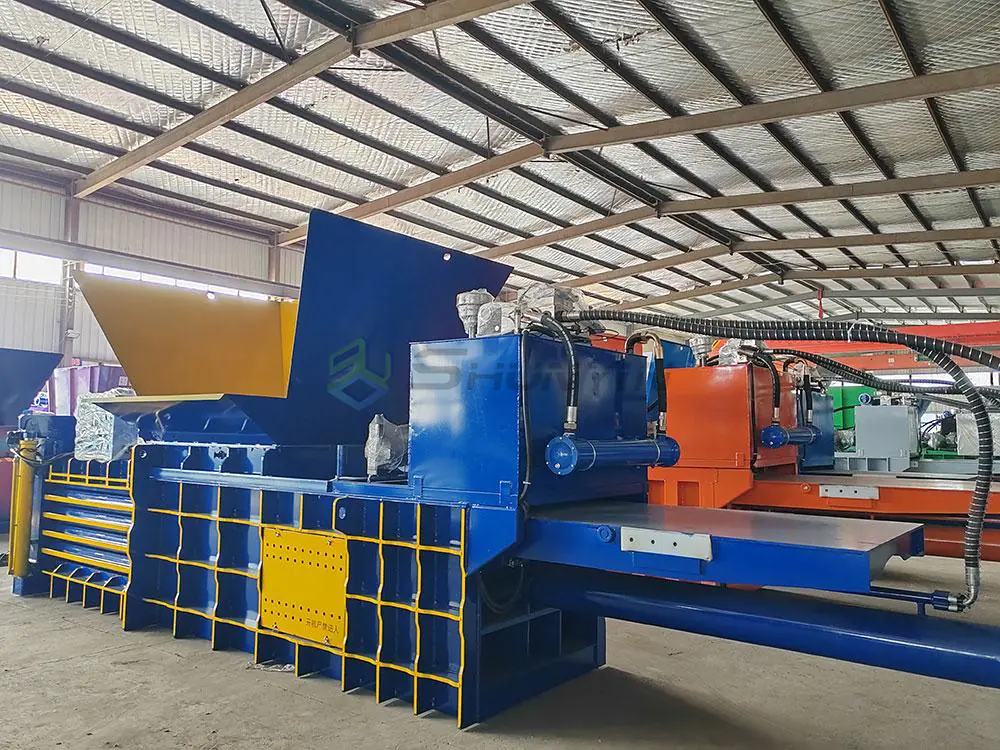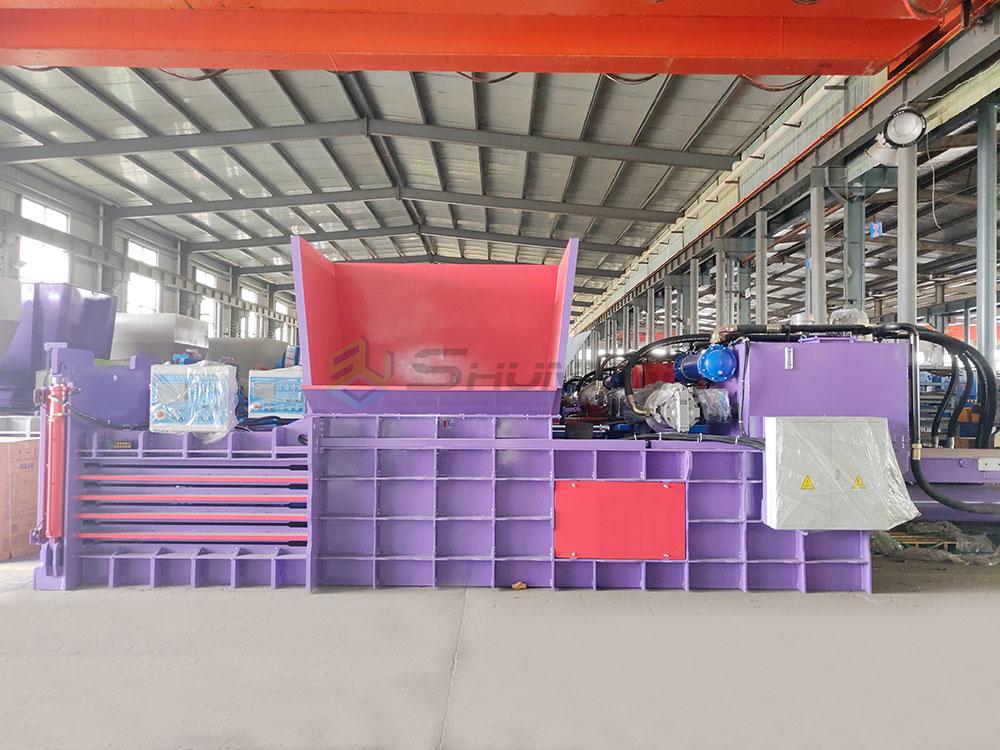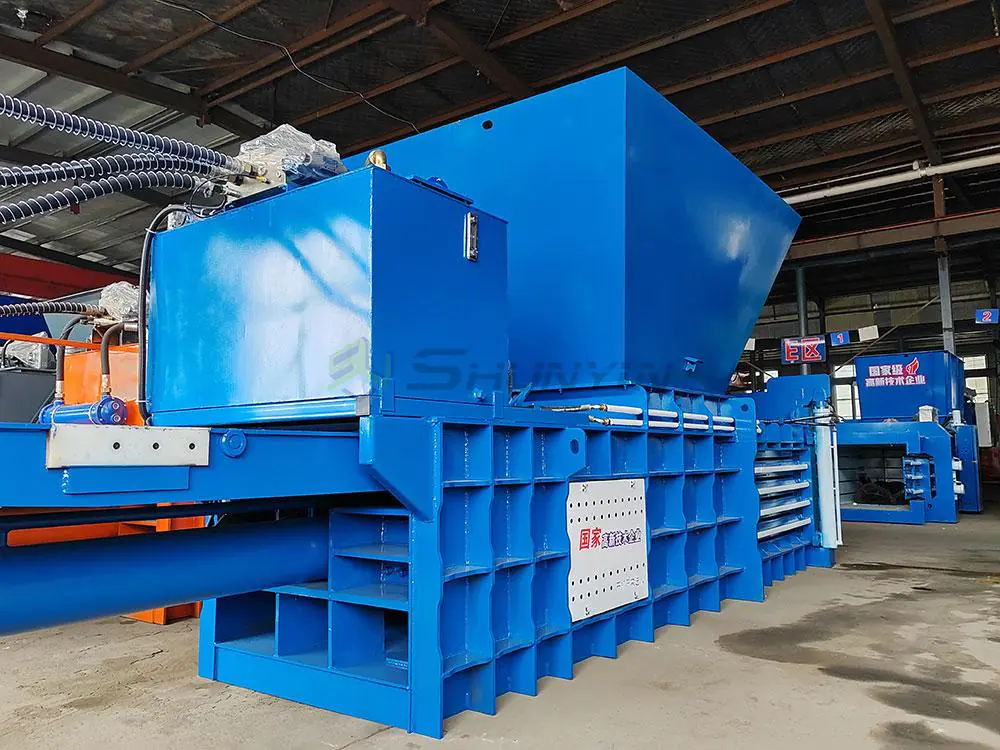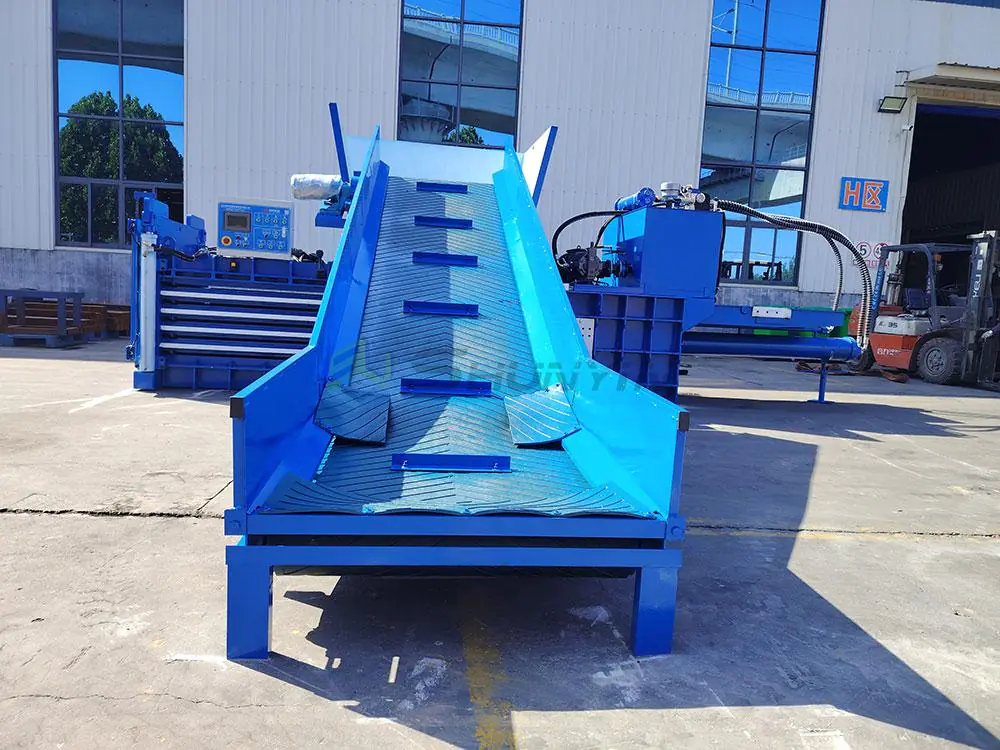
Watching a 20kg pile of plastic bottles transform into a neat 40cm³ cube still amazes me – but how do recycling balers1 create such dramatic volume reduction?
Recycling balers are industrial machines that compress waste materials into dense blocks using hydraulic pressure. Waste balers sort into two main types: vertical (10-50 tons force) for small businesses, and horizontal (60-500 tons) for large-scale operations. Key features include automatic tie systems, programmable cycles, and safety curtains. Over 87% of material recovery facilities now use these machines to process cardboard, plastics, and metal scraps.
The right baler could cut your waste management costs by 60%. Let’s break down the costs, types, and operational advantages.
What is a Recycling Baler?
At our Shanghai facility, workers call balers "material transformers" – they regularly convert truckloads of foam packaging into stackable bricks.
A recycling baler is a hydraulic-powered machine that compacts recyclables into standardized bales through three stages:1. Loading: Manual/automatic material feeding2. Compression: Hydraulic ram pressure (14-310 Bar)3. Binding: Wire/strapping applicationModern balers process 0.5-8 tons/hour with IoT-enabled models providing real-time compaction data.

Throughput Comparison: Vertical vs Horizontal
| Model | Vertical Baler | Horizontal Baler |
|---|---|---|
| Force Range | 10-30 tons | 50-500 tons |
| Floor Space | 4-6m² | 12-25m² |
| Cycle Time | 90-120 seconds | 45-75 seconds |
| Bale Weight | 150-400kg | 600-1200kg |
| Power Supply | 3-phase 380V | 3-phase 415V |
Our Canadian client reduced labor costs by 40% after switching from vertical to horizontal balers. The 180-ton horizontal model processes three times more PET bottles per shift, with automatic bale ejection saving 23 minutes/hour in manual handling.
How Much Does a Recycling Baler Cost?
When a Dubai supermarket chain asked this question last quarter, we detailed costs from $6,800 to $218,000 – here’s why the range varies so widely.
Recycling baler prices split into four tiers:• Manual vertical: $6,800-$15,000• Auto-tie vertical: $18,000-$45,000• Horizontal standard: $52,000-$125,000• Full-auto horizontal: $145,000-$325,000

Total Ownership Cost Breakdown (5 Years)
| Cost Factor | Vertical Baler | Horizontal Baler |
|---|---|---|
| Purchase Price | $24,000 | $165,000 |
| Installation | $1,200 | $8,500 |
| Energy | $3,800 | $18,200 |
| Maintenance | $7,600 | $29,000 |
| Labor Savings | -$12,000 | -$47,000 |
| Net Cost | $24,600 | $173,700 |
Our Japanese clients achieved 14-month ROI using 80-ton horizontal balers. The $122,000 machines process 23 tonnes of cardboard daily, generating $4,800/week in scrap sales. Energy-saving pumps cut power use by 18% compared to 2019 models.
What is a Scrap Baler?
Metal yards need different solutions – I recently saw a scrap baler2 crush 400kg of copper wire into a dense brick worth $3,200.
Scrap balers are heavy-duty hydraulic machines compressing metal waste into 500-2000kg blocks. Specialized types include:• Shear balers (force + cutting)• Car flatteners (1600-ton capacity)• Non-ferrous balers (aluminum/copper)Typical force ranges from 200-1600 tons for processing vehicles, appliances, and demolition waste.

Metal Compaction Performance Metrics
| Material | Loose Density | Baled Density | Force Required |
|---|---|---|---|
| Aluminum Cans | 55 kg/m³ | 350 kg/m³ | 120 tons |
| Steel Sheet | 200 kg/m³ | 1100 kg/m³ | 350 tons |
| Copper Wire | 85 kg/m³ | 720 kg/m³ | 180 tons |
| Car Bodies | 160 kg/m³ | 880 kg/m³ | 600 tons |
Our 400-ton shear baler installed in Malaysia processes shipbreaking waste at 12 tonnes/hour. The dual compression chambers handle mixed metals, achieving 92% density increase – critical when shipping costs $43/tonne to Korean smelters.
What is the Difference Between a Bailer and a Baler?
A client’s purchase order once read "metal bailer" – we had to clarify they needed material compression, not water removal equipment.
The spelling distinction matters:• Baler: Recycling/waste compaction machine• Bailer: Liquid-removal device (boats/wells)Key technical differences:
| Aspect | Baler | Bailer |
|---|---|---|
| Primary Use | Solid waste compacting | Liquid extraction |
| Force Mechanism | Hydraulic pressure | Manual pumping |
| Output Form | Cubic bales | Liquid containers |
| Industry | Recycling | Maritime/Agriculture |

Real-World Impact of Terminology Confusion
Case Study:
A Canadian auto recycler mistakenly ordered a 400-ton scrap bailer for $48,000. The liquid-removal equipment couldn’t process metal sheets, causing 17 days of production loss. Correction required purchasing proper baler at $142,000 – 35% budget overrun.
Key lessons:1. Verify equipment specifications verbally2. Request 3D operation videos3. Confirm industry certifications (RMI/ISRI for balers)
Conclusion
From $7k vertical baler3s to half-million-dollar scrap systems, recycling equipment transforms waste management economics. For help selecting the right baler configuration, schedule a consultation with our material handling experts.
-
Explore how recycling balers can significantly reduce waste volume and improve efficiency in your operations. ↩
-
Learn about the functionality and advantages of scrap balers in processing metal waste effectively. ↩
-
Discover the unique benefits of vertical balers for small businesses and how they can optimize waste management. ↩


